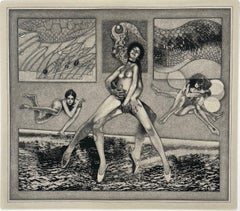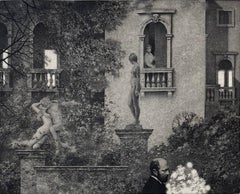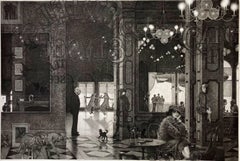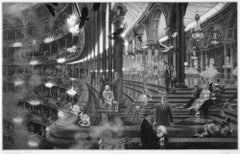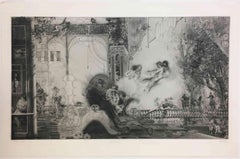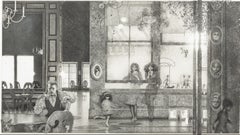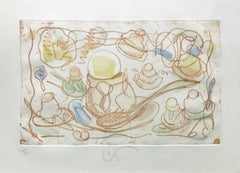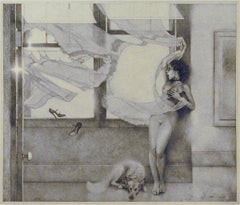Peter Milton Interior Prints
Peter Milton was born in Pennsylvania, he studied at VMI and completed his BFA and MFA at Yale University under Josef Albers and Gabor Peterdi. From 1961–68, he lived in Baltimore, where he taught at the Maryland Institute College of Art. During this period he took an avid interest in printmaking. Over 50 years, he created intricate visual worlds in more than 130 prints, many of which took over a year to make. Elements of Greek mythology, classical music, art history and history coalesce in his images, which embrace the messiness, sorrow, and elation that is life. His work is in over 200 collections including; the Museum of Modern Art, New York; Metropolitan Museum of Art, New York; Brooklyn Museum, New York; Fogg Art Museum, Harvard University, Massachusetts and the National Gallery of Art, Washington DC.
1980s Contemporary Peter Milton Interior Prints
Etching, Engraving
Early 2000s Contemporary Peter Milton Interior Prints
Etching, Engraving
1980s Realist Peter Milton Interior Prints
Etching, Paper
1990s American Modern Peter Milton Interior Prints
Etching, Engraving
1970s American Modern Peter Milton Interior Prints
Engraving, Archival Paper, Etching
1980s American Modern Peter Milton Interior Prints
Etching, Engraving
1990s American Modern Peter Milton Interior Prints
ABS, Charcoal, Engraving, Etching
1970s American Modern Peter Milton Interior Prints
Engraving, Archival Paper, Etching
Late 20th Century Contemporary Peter Milton Interior Prints
Engraving, Etching
Late 20th Century Surrealist Peter Milton Interior Prints
Etching, Engraving
21st Century and Contemporary American Realist Peter Milton Interior Prints
Digital
1990s Peter Milton Interior Prints
Etching, Engraving
1980s Peter Milton Interior Prints
Etching, Engraving
1780s Realist Peter Milton Interior Prints
Engraving
1970s Pop Art Peter Milton Interior Prints
Handmade Paper, Aquatint, Etching
1970s Realist Peter Milton Interior Prints
Offset
Early 20th Century Peter Milton Interior Prints
Etching
1880s Impressionist Peter Milton Interior Prints
Etching, Intaglio, Drypoint
Early 2000s American Modern Peter Milton Interior Prints
Color
Late 20th Century American Modern Peter Milton Interior Prints
Mezzotint
1960s Realist Peter Milton Interior Prints
Lithograph
1920s Vienna Secession Peter Milton Interior Prints
Etching, Drypoint, Aquatint
1850s Realist Peter Milton Interior Prints
Printer's Ink, Rice Paper, Woodcut
Early 20th Century American Modern Peter Milton Interior Prints
Wool, Engraving
Early 2000s American Modern Peter Milton Interior Prints
Color
Early 2000s Contemporary Peter Milton Interior Prints
Etching, Engraving
Early 2000s Contemporary Peter Milton Interior Prints
Engraving, Etching
1990s American Modern Peter Milton Interior Prints
Engraving, Etching
